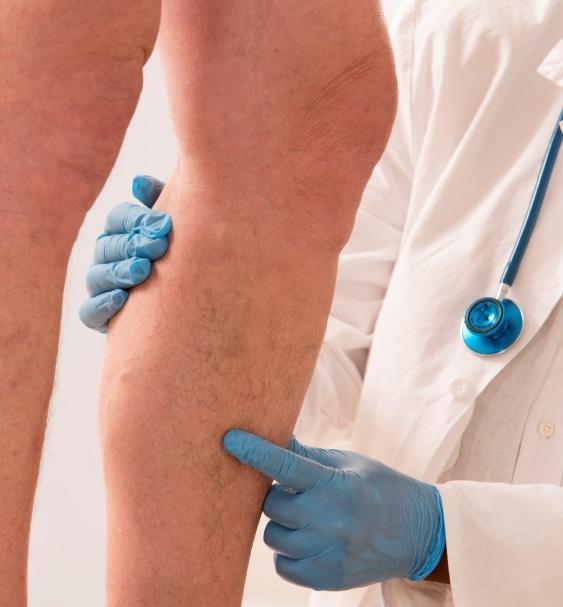Diagnosis of Varicose Veins
Vein Disorders – Varicose Veins Like spider veins, one aspect of diagnosis of varicose veins is simple: if you’ve got ’em, you’ve got ’em. But it is the evaluation of the cause of the varicose veins that is more important. Varicose veins occur usually according to well-known anatomical patterns. Varicose veins, in the majority of cases, are a disease of the superficial veins. The Great Saphenous Vein (a superficial vein) starts at the inner ankle, runs up the inner leg and thigh, and empties into the Femoral Vein (a deep vein) at the groin. The Short Saphenous Vein (a superficial vein) runs up the back of the calf and empties into the Popliteal Vein (a deep vein) behind the knee. In addition, there are communicating, or perforator, veins that connect the deep veins Vein Disorders – Varicose Veins to the superficial veins in various locations of the legs. In the past, indirect methods were used to look for which veins had bad valves. Today we have sophisticated ultrasound technology in Sacramento that allows us to clearly view the leg veins and assess whether their valves are functioning properly or not. Rather then try to make an educated guess at which might be the abnormal vein, the ultrasound shows us exactly which vein is abnormal, and how much of its length is abnormal. Varicose Vein Treatment Sacramento can then be planned according to the ultrasound findings.


OUR PRACTICE
Monahan Vein Clinic brings to the Sacramento region expertise in evaluating and managing vein problems that is uncommon in medical practice. Vein disease is a branch of surgery that has been trivialized and neglected. Many non-specialists have presumed to treat vein disease with modern methods, though they lack formal training in this field.

VEIN DISORDERS
Vein disorders in include chronic and acute problems. They cover a wide range of symptoms from the most serious blood clots to non-threatening cosmetic blemishes found in the majority of the population. Chronic venous disorders in Sacramento are very frequent: they affect at least 20% of the entire adult population and over 50% of females over 60 years of age.

TREATMENTS
An accurate non-invasive diagnosis is important in all vein treatment in Sacramento. Expert ultrasound provides the correct diagnosis and is the basis for targeted treatment for abnormal veins. Treatment choices include the broadened use of injection techniques, with and without ultrasound guidance, for spider and varicose veins, and new minimally invasive vein shrinkage procedures like the VNUS Closure procedure to replace vein stripping for varicose veins.
